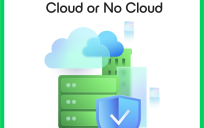This blog post is an excerpt from GovLoop’s recent guide, Forecasting the Cloud: Eight Ways the Technology is Changing Government. To download the full guide, head here.
Today, the public sector is seeking solutions to its networking challenges. Organizations want their networks to adjust and respond dynamically, based on their policies, and they want those policies to be automated so that they can reduce the manual work and personnel cost of running these networks.
Public sector IT also needs to quickly deploy and run new applications within and on top of their networks so that they can deliver results to citizens. And they want to do this in a way that allows them to introduce these new capabilities without disrupting their mission.
The software-defined network (SDN) is a solution to these challenges. But as popular as it’s been lately, it’s still somewhat shrouded in misconception. To demystify the topic, GovLoop sat down with Scott Ormiston, Director of Solutions Architecture, Business Development at Affigent, and Andy Ramsey, Account Manager at Juniper Networks, to discuss SDN’s benefits for the public sector – and how you can implement an SDN at your organization.
“The software defined network at a high level is the ability to enable automation of applications in the network,” Ormiston explained. “It allows the applications to become mobile, and to be available where the user needs them by enabling integration between changes at the application level. So it’s really about providing automation and simplifying the provision of new capabilities and new applications.”
Ramsey added that one of the reasons the SDN is helpful to the public sector is that today the public sector needs to do more with less – and the SDN helps them do that with the automation of workflows.
“Today, many workflows are being done manually by various teams: the applications teams, the system administrator teams, the network teams, and the security teams,” Ramsey said. “So, turning up new services or changing services requires a lot of manual complex interactions between different teams, which inhibits the ability for turning up and changing those new services. The SDN takes on many of these tasks and frees up your team to focus on other mission-critical projects.”
Another benefit in using an SDN? It’s all about the simplicity, said Ormiston.
According to Ormiston, SDN enables simplicity for both the end user and the network administrators in different ways.
“The SDN simplifies things for the end user by making locations irrelevant,” he said. “They no longer have to worry about where’s the datacenter or storage located, or where are servers that can handle my workload.”
As for the network administrations, SDN simplifies their job significantly from the standpoint of what they’re doing today where they have to constantly adjust the network to changes based on customer needs.
“Imagine someone running a network that covers 50 or one hundred sites, which would be a small agency in the U.S. government. If they make a change to the back of the network and the customer needs to make a certain server set in the datacenter available to all the remote offices, they may have to log into 50 or one hundred network devices, and make manual configuration changes,” explained Ormiston. “ Today you can simplify that workload significantly by automating with SDN.”
If you’re getting ready to make the switch to an SDN, Ramsey and Ormiston said there are three critical steps you need to first take.
A good logical first step, Ramsey explained, is to enable Ethernet VPNs at the Datacenter Interconnects.
“EVPN supports virtual machine mobility between datacenters and provides a great deal of automation by itself. It understands when a virtualized application is born or if it moves, and can provide that intelligence out to the entire network via standard protocols. It’s also very helpful for stitching the existing environment to new environments based on SDN,” Ramsey said.
Ormiston added on: “Step two is to assess what you have and what you want to accomplish, and then pick the solution that’s the best fit for you.
The third step is to deploy it in a systematic fashion, making sure your people are trained and have the expertise so that they can take advantage of the new technology you’re delivering.”
Ramsey offered this final piece of advice: “You may not think you’re ready for SDN today but you should be, at the very least, incorporating automation capability and the ability to integrate with orchestration tools into your technology selection process.”





Leave a Reply
You must be logged in to post a comment.